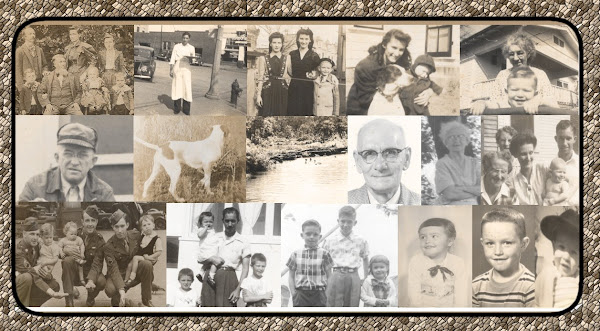 …The Old School Way
…The Old School WayBack in the day, as they say, hunting in the Ouachita Mountains of Arkansas was not only a sport, a source of pride and a pleasurable pastime for many people, but a primary source of food. It was all that and more for many of those living in the area and my grandfather, Artie, was no exception. As my brother David reminds me, Artie probably only killed about twenty deer his entire life because during the Great Depression the deer population in Arkansas was almost depleted by people needing food and the herd didn’t begin to flourish again until after World War II.
On average I think Artie owned at any one time twenty-five to thirty Walker hounds all sporting leather collars with ID tags with their names and Artie’s address on them. These dogs were primarily deer dogs, used to flush and run white-tailed deer along the mountains to the waiting danger of hunters stationed at given posts called deer stands. In those days, before running dogs to hunt deer became illegal, the dogs would jump their prey and chase them for miles and it wasn’t unusual for my grandfather’s dogs to be found hundreds of miles from home, sometimes all the way into neighboring Oklahoma.
This past weekend marked the opening day of modern firearms deer hunting season in Arkansas (separate seasons are set aside for bows and black powder hunting). It is estimated that around 500,000 hunters will make their way into the woodlands and mountains of Arkansas on this opening weekend. Dangerous is an understatement, for man or beast, and anyone with good sense will stay home. But this season’s hunting start made me recall an incident (one of many) related to my grandfather and deer hunting that’s both humorous as well as telling about my grandfather and what he thought of the government’s restrictions on hunters.
One autumn season, my grandfather’s dogs were caught running deer on National Park lands by game wardens and my grandfather was called into court to face the charges. The judge asked if he knew it was illegal to run dogs on National Park lands and my grandfather replied that, yes, he did know it was illegal but that the dogs had been set loose to hunt on private property and merely followed the deer for miles onto the government land. The judge said there were plenty of posted signs marking the National Park lands as ‘No Hunting Allowed’ and my grandfather just laughed and said, ‘Well, judge, when you can teach my dogs to read, they’ll know better than to hunt there.” Case dismissed.
Here’s a picture of my grandfather at one of the many hunting dog trials held in Logan County around Blue Mountain Lake area, circa mid to late 1940s, maybe very early 1950 (no date on photo to know for sure). He’s one of the event’s judges and the one on the far left holding the dog’s tail. Can anyone identify the others in this picture?
















